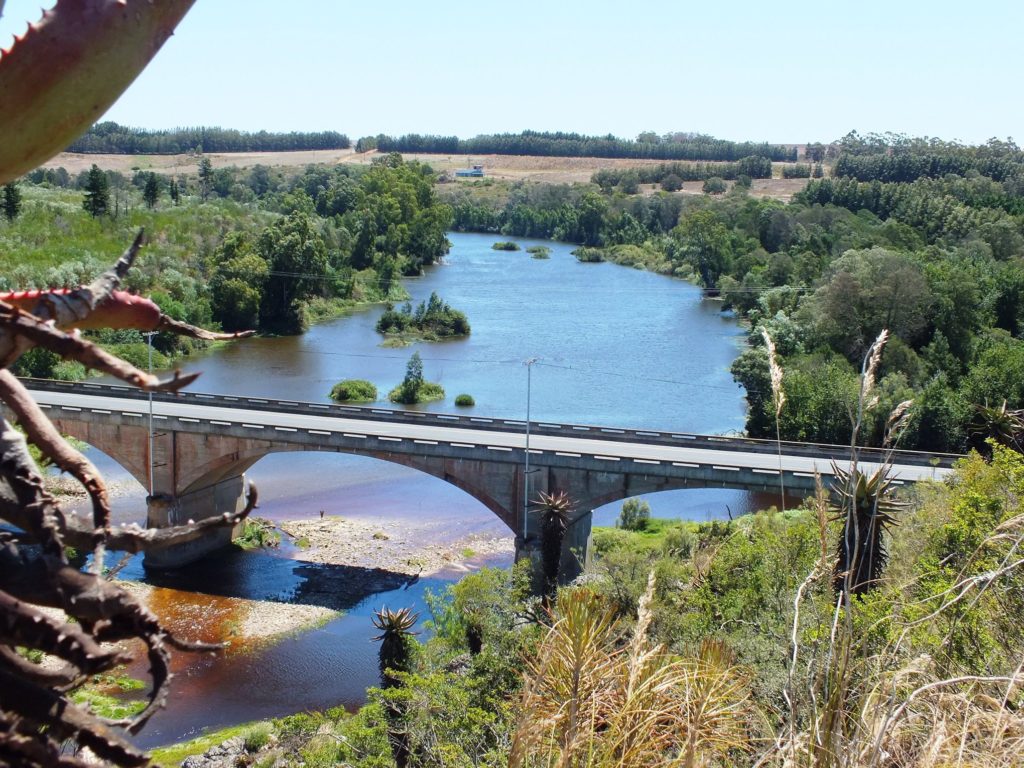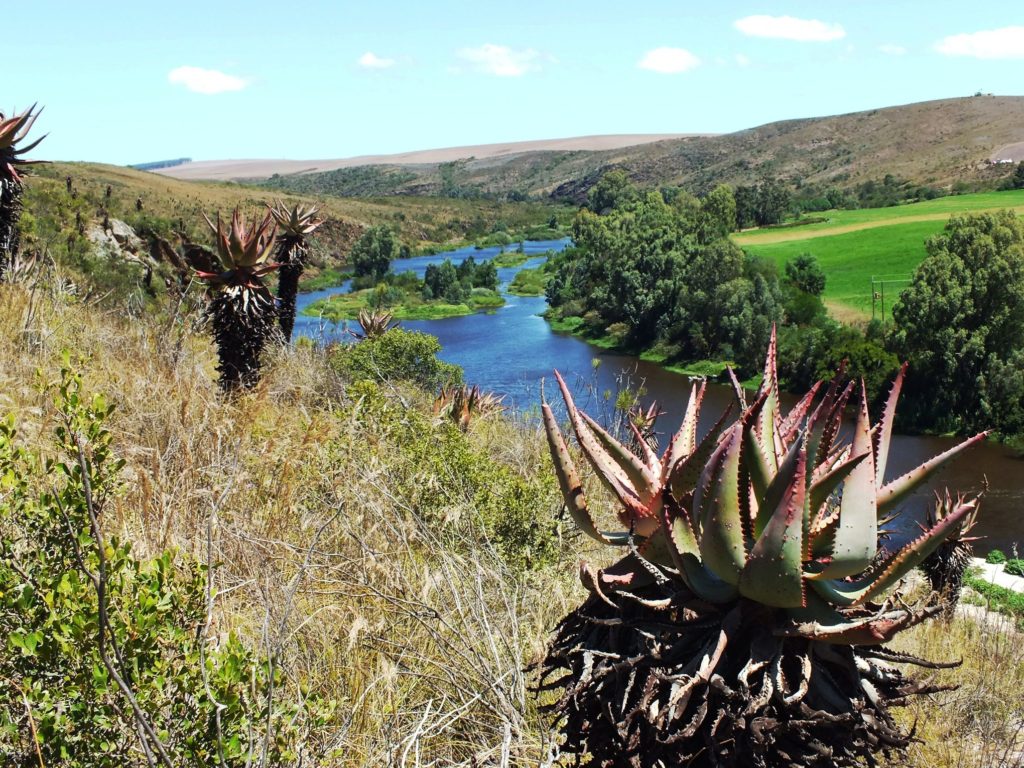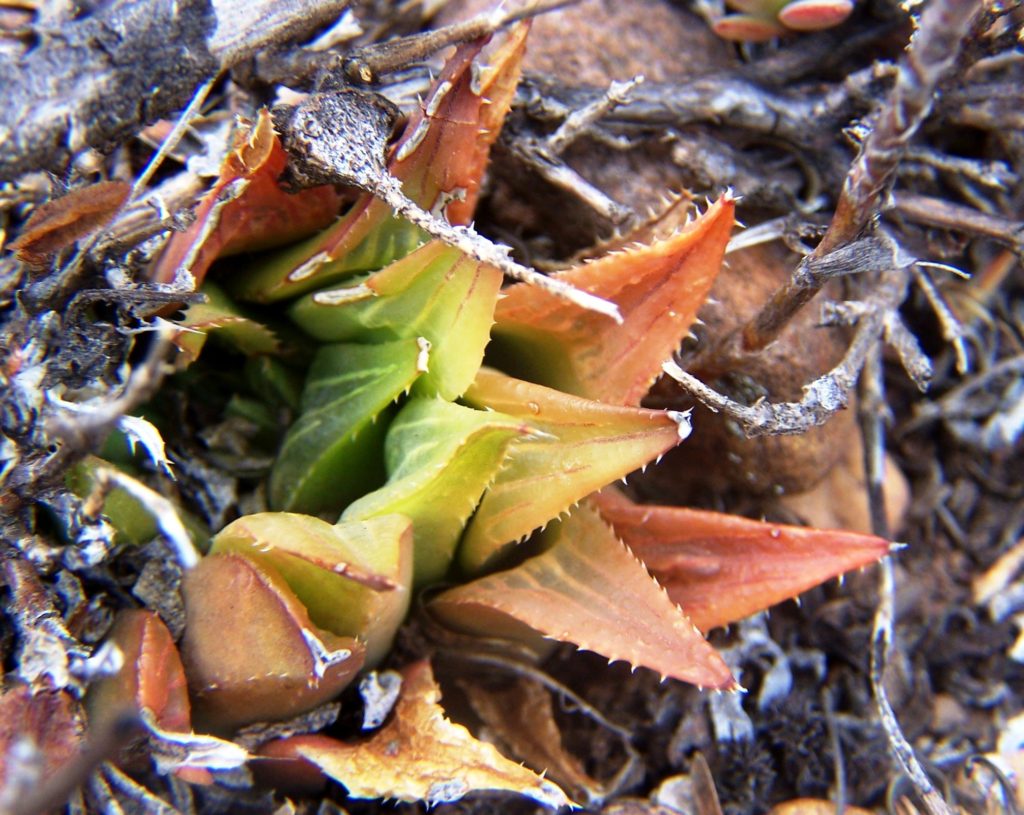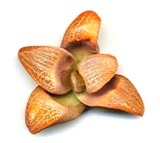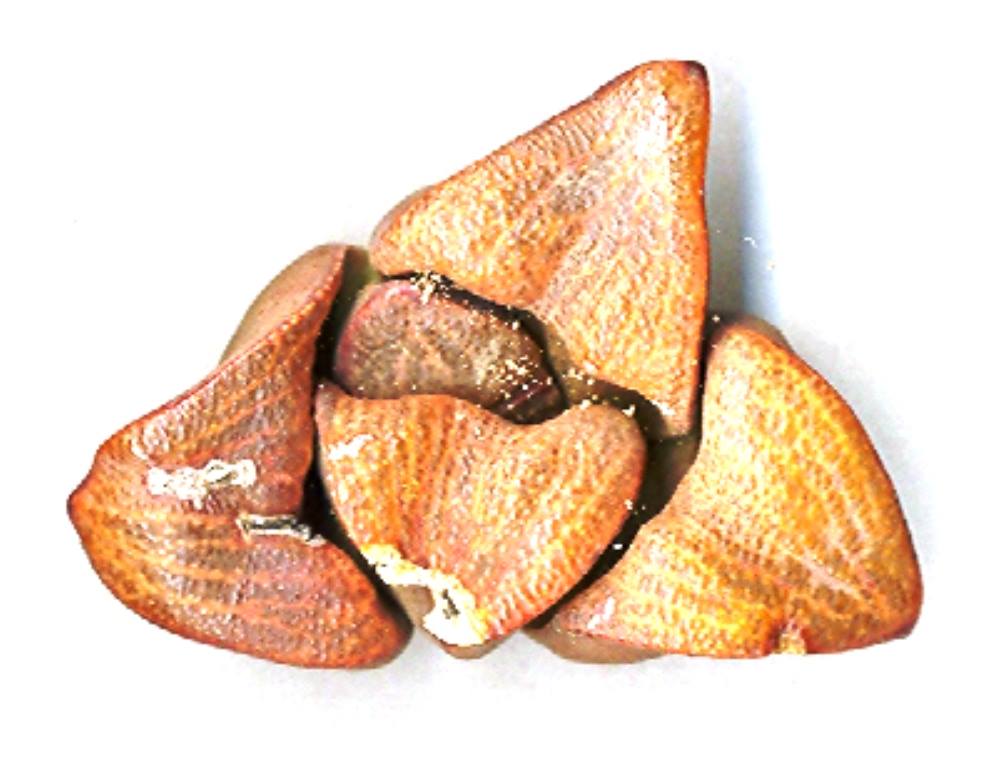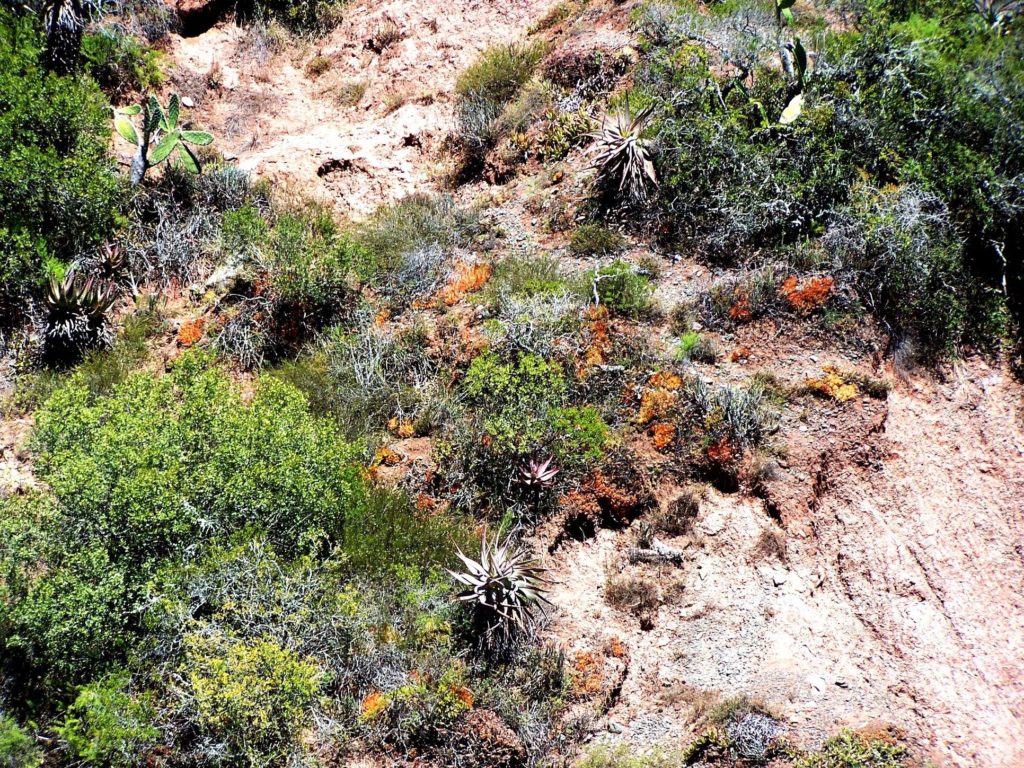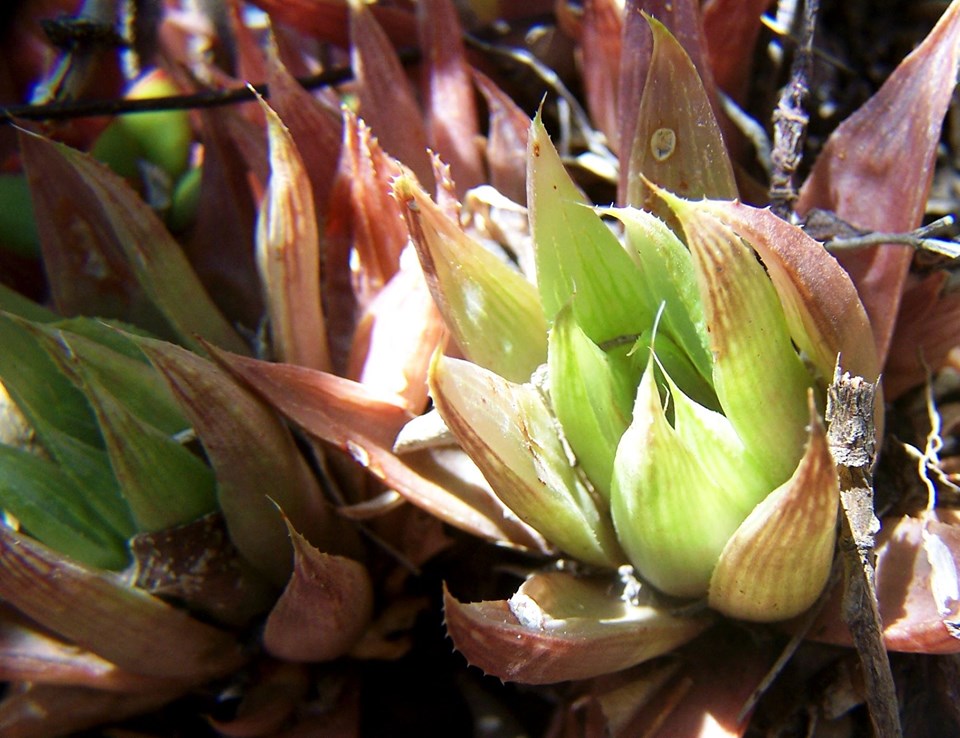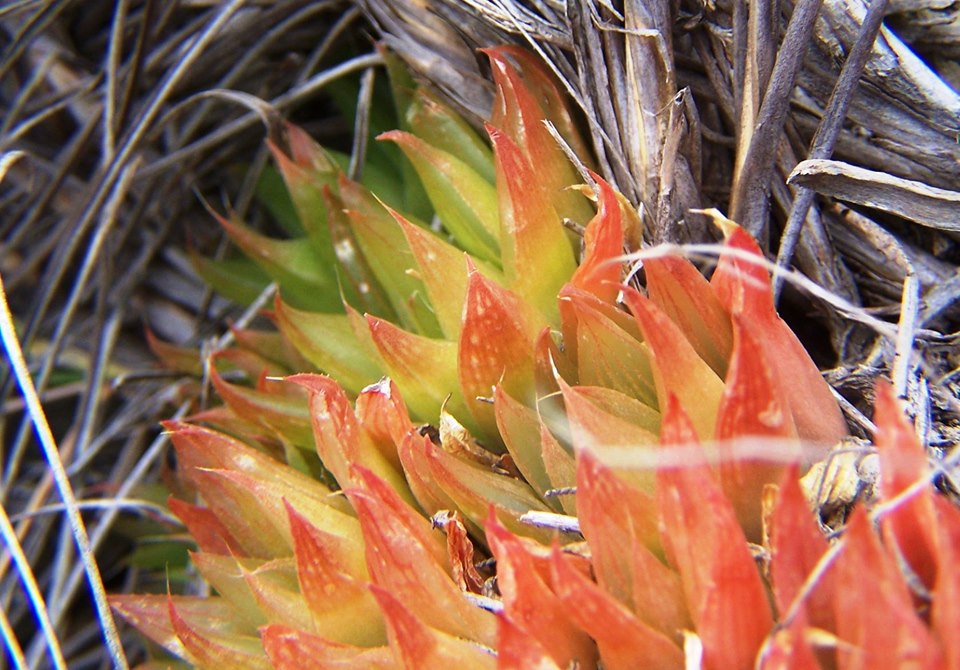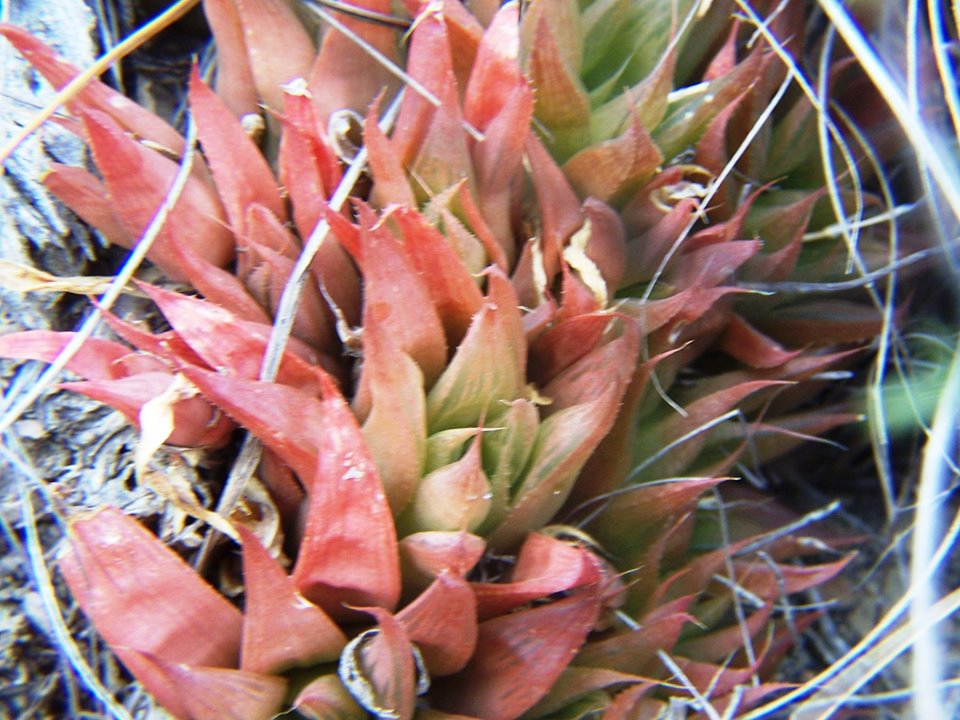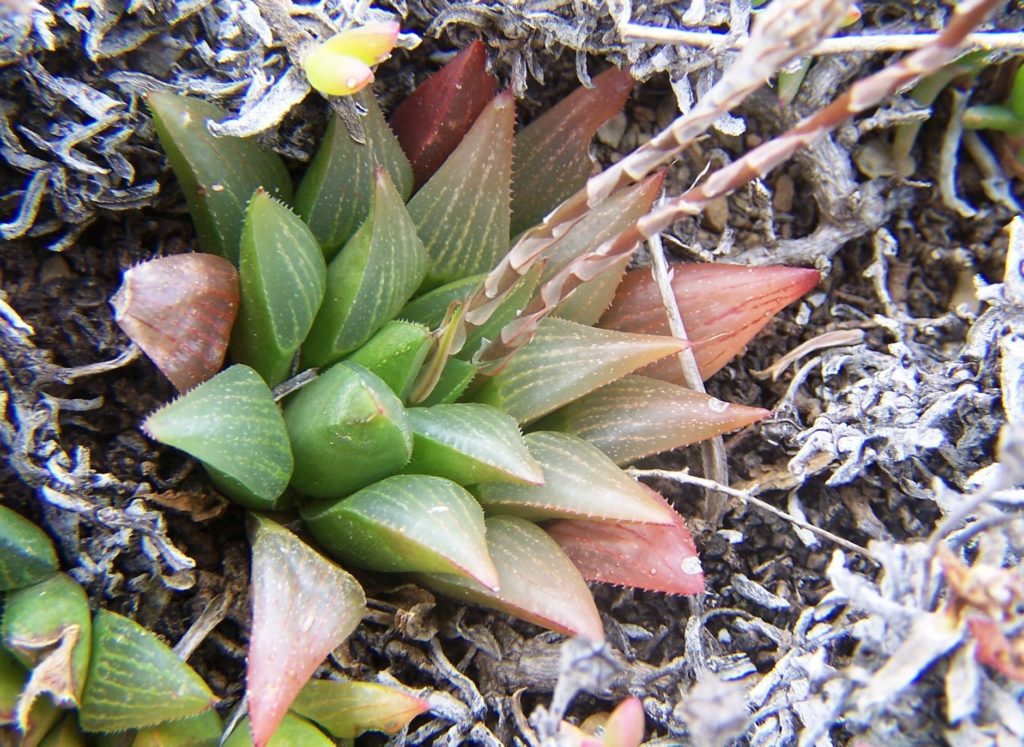1. 2019.5.7 – I am going to post a heap of habitat pictures of H. retusa/turgida to help enthusiasts understand these plants and their relationships. As with H. cymbiformis and H. cooperi, there is a direct correlation of clump-forming cliff dwellers (turgia) and more solitary ground hugging plains dwellers (retusa). It is quite important to recognise the geographic relationships as well but that is rather difficult to do without maps. The immediate geological formation e.g. less erodable sandstones vs more erodable shales, is also significant. This is H. retusa at the midwestern limits of its distribution on the Breede River near Swellendam.
What I find extraordinary is the way in which amateur succulent journals resist any effort to rationalise names in accordance with some sort of scientific intent. The Latin binomial seems to be all significant and it has made life in Haworthia absurd. All it needs is a very simple adaptation and the adoption of a convention where the species name is taken as generic and is so understood in the community?
Steven Molteno : This post made me look at my maps again. I see the west-east gradient between mutica-nigra-retusa … I think I also see the habitat-gradation from retusa to turgida in the Eastern Overberg & Riversdale area. On the map it looks like turgida then stretches out in all directions (often along the river-valleys). I get this initial impression because in its westwards extension (i.e. back towards Swellendam), I do not yet see any gradient between turgida and mutica. Would it be correct then to assume that this is because they’re at different “ends” of this entity’s spectrum? (I’m not factoring in the other arms of this entity yet – i.e. mirabilis, pygmaea etc., or my brain will explode. I find it easiest to just examine portions of the Haworthia lattice, one by one, and maybe that’s a human tendency that leads us to the illusion of discrete binary units in nature.)
2. 2019.5.8 – Heidelberg is an extraordinary place for Haworthia and H. retusa has many guises particularly towards its turgida variant. In this population the plants are large and there is a mirabiloid connection as well.
Steven Molteno: I’ve wondered about the mirabilis at Die Plotte west of Heidelberg. Many I thought had features I previously associated with retusa-turgida
Bruce Bayer: Steven – this was the near origin of “heidelbergensis” as very small mirabilis. But looking at only one population does not help much. There are several river systems in the southern Cape and these are associated with the drivers of species variation. At Heidelberg we have the Klipriver and the Duiwenhoks going down to the sea. So, from the sandstone Langeberg to the limestones at Vermaaklikheid we have all the ingredients for difference in the Haworthias. The entire mirabilis/retusa lineages seem to have their origins down those valleys.
3. 2019.5.9 – H retusa/turgida at Draaihoek NNW Albertinia – a classic as H. dekenahii also originated here but it is of more solitary and flatter to the ground (it fits better into the pygmaea element than into retusa). The 5th picture is significant because it is very mirabiloid and could easily be passed off among southern populations of H. mirabilis.
4. These are unfortunately the only pictures I have for “H. dekenahii” (=H. pygmaea) Draaihoek. The locality has been severely impacted by bush encroachment associated with fire management along a power servitude. I wonder if there are still plants there?
Delightful, as I find myself confounded by the very trap I am explaining away. Draaihoek is a principal element in the illusion that H. pygmaea and H. turgida are two different things. When the picture is complete it is very obvious that the two things there are the plains and the cliff forms of the same thing (H. retusa). It later becomes clear that we have a thing south of a mountain range and one north of a mountain range (H. emelyae) where space is the only difference?
5. 2019.5.10 – These posts are not in any sequence and are just taken fairly randomly. So just let us go back to Heidleberg and the Duiwenhoks river that runs to the sea. River systems was an early insight into how this puzzle arises. Tierhoek is a dry area to the SE Heidleberg. It seems to have been unknown or there would probably be a name for the plants!
6. 2019.5.11 – In one of my very early articles I wrote about the continuity of H. turgida from about 16 miles north of Heidelberg down the west bank of the Duiwenhoks river to the town itself. This proved to me that the small spiny green forms in the Sandstones were continuous with the bigger, smoother, yellow, pink and red-coloured plants southward and again to the east all up the Goukou river at Riversdale. The foundation was already laid for the understanding that turgida led on to retusa.
This is an odd population from SE Heidelberg along the Duiwenhoks that in a way replicates the Sandstone forms of turgida (= caespitosa?).
2019.5.12 – As an aside. While looking at these greener things, it occurred to me to make this connection. It brings multiple things to my mind that are fairly new and additive to my story. Is there a suggestion of continuity? What do you think?
Lawrence Loucka: Oh look, 3 different species all in one spot!
Bruce Bayer: Too true! Disastrous! It makes me wonder if the story is worth telling. This is actually “H. paradoxa” in limestone at the mouth of the Duiwenhoks. Taking all the variants, I have no doubt that I could find images from the whole periphery of the distribution of emelyae, mirabilis, retusa, mutica, pygmaea to indisputably say this must be ONE. Strange how unavoidable it is that I use names to explain that only one is actually necessary!
2019.5.13 – The first two pictures are from Kransriviermond where this “turgida” hybridises (sic!) with “mirabilis” to generate “mutica var nigra” – a lineage that can be traced back up the Duiwenhoks, through Heidelberg, along the Klipriver, Van Reenens Crest, Tradouw Pass, Buffeljagts Rivier to “mutica” in the west. The second two are “turgida” again, from a bit south at Dassieklip. That lineage crosses over to the Goukou River to the east and merges in the “retusa” “turgida” “mirabilis” melange of that area.
Jakub Jilemicky: I think plants from Brakkekuil, a bit further South have also both, turgida and retusa nigra.
Bruce Bayer: Yes Jakub, I posted a whole set of those Brakkekuil plants – what is also interesting about them is that it is neither a steep cliff-like habitat nor a flat surface habitat.
https://haworthia-updates.haworthia.org/2012/01/30/volume-5-chapter-4-haworthia-retusa-part-2/
7. 2019.5.13 – Neither “retusa nor turgida” are known near this to the SW of Heidelberg on the Slang River.














